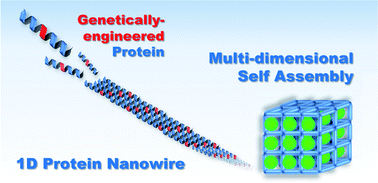Genetically engineered proteinnanowires: unique features in site-specific functionalization and multi-dimensional self-assembly
Abstract

* Corresponding authors
a
Department of Chemistry and Biochemistry, City University of New York – Hunter College, 695 Park Avenue, New York, NY, USA
E-mail:
hmatsui@hunter.cuny.edu
Fax: (+1) 212-772-5332
Tel: (+1) 212-650-3918

 Please wait while we load your content...
Something went wrong. Try again?
Please wait while we load your content...
Something went wrong. Try again?
Y. Maeda and H. Matsui, Soft Matter, 2012, 8, 7533 DOI: 10.1039/C2SM25352F
To request permission to reproduce material from this article, please go to the Copyright Clearance Center request page.
If you are an author contributing to an RSC publication, you do not need to request permission provided correct acknowledgement is given.
If you are the author of this article, you do not need to request permission to reproduce figures and diagrams provided correct acknowledgement is given. If you want to reproduce the whole article in a third-party publication (excluding your thesis/dissertation for which permission is not required) please go to the Copyright Clearance Center request page.
Read more about how to correctly acknowledge RSC content.
 Fetching data from CrossRef.
Fetching data from CrossRef.
This may take some time to load.
Loading related content
